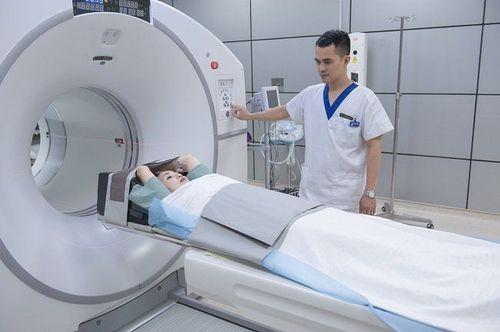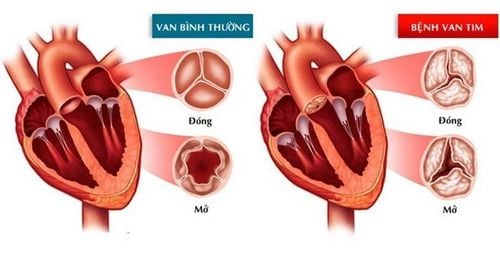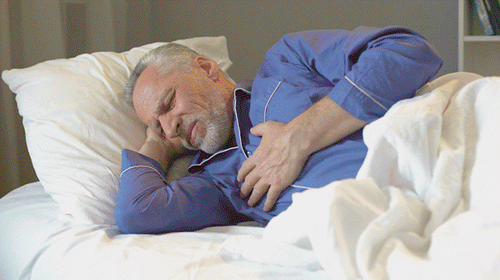This is an automatically translated article.
The article was professionally consulted by Specialist Doctor I Nguyen Truong Duc - Radiographer - Department of Diagnostic Imaging and Nuclear Medicine - Vinmec Times City International General Hospital.Computed tomography coronary angiography is a technique of coronary angiography using a computerized tomography machine with contrast injection, allowing to evaluate the entire structure of the coronary artery system as well as the chambers and valves of the heart.
1. Overview of coronary artery computed tomography
Coronary computed tomographic angiography (CCTA) is a coronary angiography technique using a computerized tomography machine with contrast injection, which allows to evaluate the entire structure of the coronary artery system as well as the coronary arteries. such as heart chambers, heart valves.Currently, coronary computed tomography is a modern technique using computerized tomography machines with high spatial and temporal resolution, requiring at least a micro tomography system. from 64 or more probe arrays.
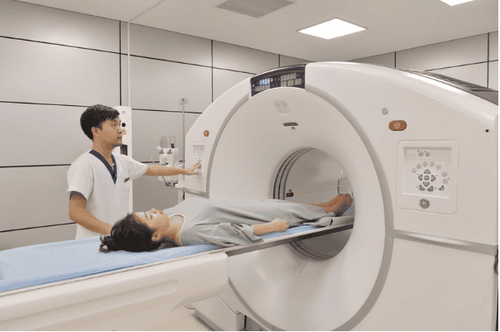
Chụp cắt lớp vi tính động mạch vành giúp đánh giá toàn bộ cấu trúc hệ thống động mạch vành
2. Indications and contraindications for coronary computed tomography
Coronary computed tomography is indicated in the following cases:● Screening in low- and intermediate-risk patients according to Framingham criteria.
● Patients with atypical chest pain, especially those who have had stenting or bypass surgery.
● Diagnosis of coronary artery disease in suspected cases after performing other tests, coronary artery anatomy, ...
● Diagnosis of cardiovascular diseases (such as mitral valve , aortic valve , myocardial hypertrophy , ...) in patients at risk (such as diabetes, hypertension, hyperlipidemia, ...)
● Patients after bypass surgery to determine the bridge connect.
Coronary computed tomography is contraindicated in cases such as:
● CT coronary angiography is not recommended in patients with acute coronary syndrome and high risk factors according to Framingham criteria.
● Patients with kidney failure, irregular heartbeat, atrial fibrillation, or allergy to contrast, history of bronchial asthma, pregnant women.
● The patient uses metal-supporting machines and devices.
● The patient is uncooperative.
Coronary computed tomography machine
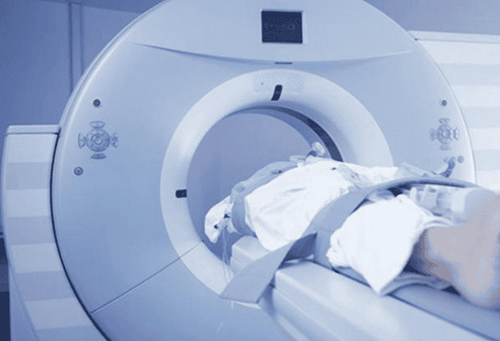
Máy chụp cắt lớp vi tính động mạch vành
3. Coronary artery computed tomography procedure
Coronary computed tomography scan procedure includes the following steps:● Step 1: The patient is placed in the supine position, established an intravenous line and connected to an electric syringe. The technician installs the ECG port and checks the patient's heart rate on the screen of the scanner. The patient is instructed to breathe at the request of the technician.
● Step 2: Conduct coronary angiography in 2 cases, conventional and bridged. Take conventional imaging from the fork of the trachea to the bottom and with the bridge from the top of the lung to the bottom of the bottom.
● Step 3: Take a photo before injection and calculate the calcification score according to the Calcium Store program and calculate according to the Agaston scale.
● Step 4: Take coronary angiography after iodinated contrast injection. Use targeted injection techniques (Test bolus or bolus tracking) to determine when the highest drug concentration is reached at the aortic origin. Inject the contrast agent with the appropriate dose (depending on the drug used and the patient's condition, usually the dose is 70-100 ml), the injection rate is 4-5 ml/s. Can be combined with physiological saline to reduce the total dose of the drug, better penetrate the blood vessels and help reduce the image noise from the right heart.
● Step 5: The technician conducts coronary artery reconstruction with a thickness of 0.75/0.4mm or 0.6/0.3mm, however, it should be noted that the lower the thickness, the more noisy the image. . In the case of low heart rate, about 65-70% of the cardiac cycle should be regenerated. Coronary computed tomography scan results must clearly show the structure of the scan area and detect lesions (if any).
● Step 6: The patient needs to be monitored in the room for 30 minutes after the injection before leaving to prevent late allergic complications.
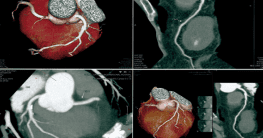
Kết quả chụp cắt lớp vi tính động mạch vành phải hiển thị rõ cấu trúc vùng chụp và phát hiện tổn thương
4. Complications and treatment in coronary computed tomography
During computed tomography coronary angiography, the following complications may occur. In case the blood pressure does not increase, the patient should be taken to the emergency room to be treated according to the protocol.● Contrast-induced complications: Manage according to protocol of contrast-induced complications.
Coronary computed tomography is used to diagnose, identify and detect lesions and pathologies in the coronary system by using a multi-slice computed tomography machine combined with contrast injection.
Vinmec International General Hospital is equipped with many modern CT scanners such as 512 ranges, 640 ranges, two-energy CT... modern, providing clear images of the body with high accuracy. They have the potential to help doctors eliminate the need for follow-up tests, while also helping patients shorten hospital stays. In addition, this technology also integrates a shield to regulate radiation exposure. At the same time, it also prevents unnecessary radiation doses before and after the procedure. With 640-sequence CT scanning technology, the time to record images of the coronary system is only in one beat, significantly reducing image noise caused by movement, so patients can save a lot of time for the examination process. mine.
Doctor Duc has nearly 17 years of experience in diagnostic imaging at Hanoi E hospital. Currently, the doctor is working at the Department of Diagnostic Imaging - Vinmec Times City International Hospital.
To register for examination and treatment at Vinmec International General Hospital, you can contact the nationwide Vinmec Health System Hotline, or register online HERE.




